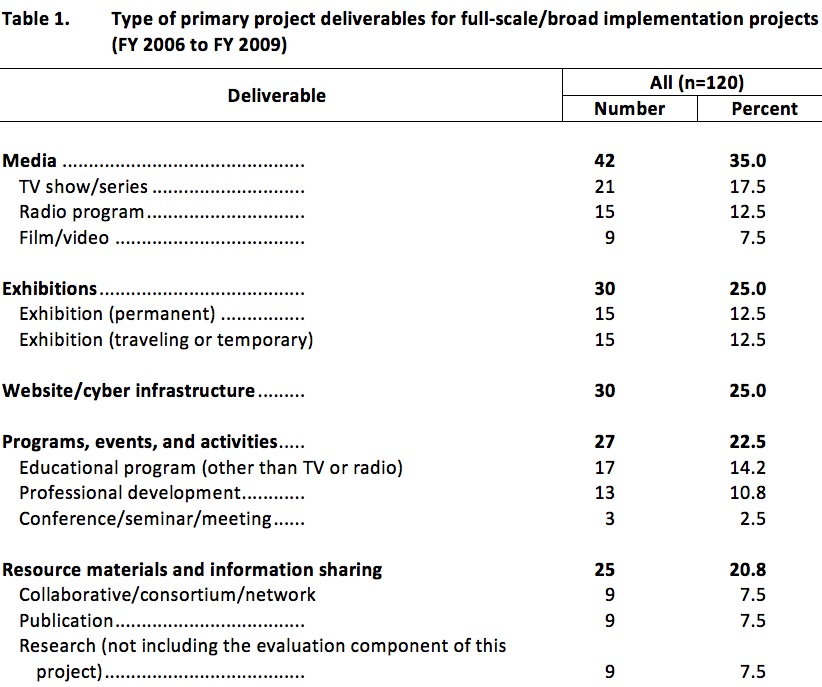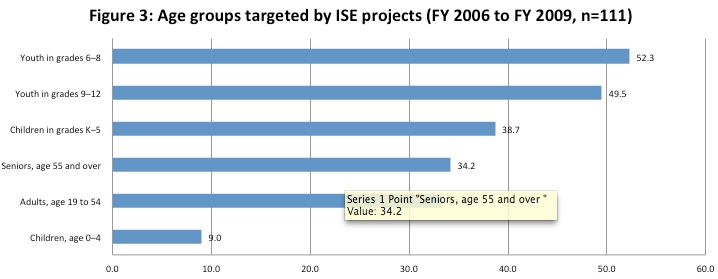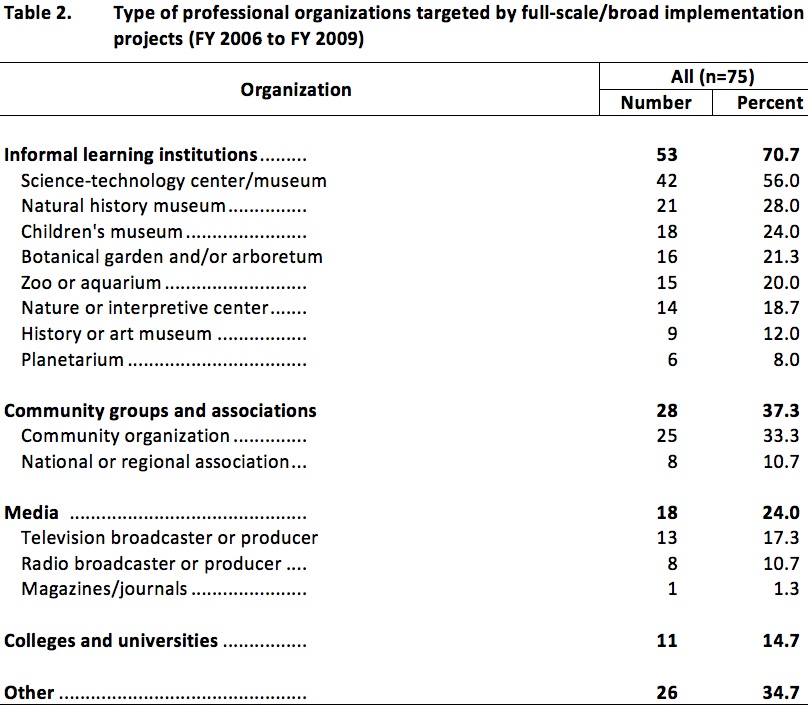NSF ISE Online Project Monitoring System: Characteristics of ISE Project Deliverables
By Gary Silverstein, Hannah Putman, and Melissa Bryce, Westat.
One of the most compelling aspects of the informal science field is the wide array of techniques that projects employ to deliver innovative science education to public and professional audiences. In our third monthly column highlighting findings from the ISE Online Project Monitoring System (OPMS), we delve into the characteristics of ISE project deliverables. Specifically, we examine the primary deliverables anticipated by the 120 ISE full-scale/broad implementation projects awarded between FY 2006 and FY 2009 that have submitted their OPMS baseline data at the time of this article. These data indicate that, within this singular NSF program, projects use many mediums to reach a broad range of audiences, and every year the list of innovative approaches continues to grow.
For the purposes of the OPMS, primary deliverables are defined as any product, activity, or service that comprises at least 25% of a project’s overall effort. As shown in Table 1, the most prominent primary deliverable types fell under the heading of media (35%)—most notably TV show/series (18%) and radio program (13%). One-fourth of projects had an exhibition and/or a website/cyber infrastructure that was a primary deliverable.

Public Audience Deliverables
ISE projects can reach their public audiences at both private and public settings. Not surprisingly, a majority (60%) of projects that intend to reach their public audiences at a private setting planned to do so via the internet (Figure 1). A smaller proportion planned to reach individuals via television or radio. The most prominently cited public setting at which projects expected to reach individuals was science-technology centers/museums (42%) (Figure 2).


Most projects with a public audience deliverable (81%) were planning to target some category of children and youth under the age of 18—with 52% expecting to reach youth in grades six through eight, 50% expecting to reach youth in grades nine through twelve, and 39% expecting to reach children in kindergarten through fifth grade (Figure 3). In addition, as shown in Figure 4, most of the 111 projects serving public audiences were expecting to target residents of inner city urban environments (77%) and/or ethnic groups underrepresented in STEM (70%).


Professional Audience Deliverables
In the OPMS, projects that have deliverables aimed at professional audiences identify the types of professional organizations that they are targeting as well as the specific target audiences that they expect to reach. As shown in Table 2, 71% of the ISE projects serving professional audiences reported targeting at least one informal learning institution (most frequently a science-technology center or museum).
In addition to identifying the types of organizations professional deliverables would reach, projects identified the professional audiences that the deliverables would target. As shown in Figure 5, most (79%) of these projects expected to engage educators—while at least one-third expected to engage researchers and evaluators; exhibit designers; or scientists, engineers, and mathematicians.
Next month look for a new article about projects’ anticipated impacts. In the coming months, we will answer additional questions about the characteristics, activities, and impacts of the ISE projects that have submitted their OPMS data.
